V-3
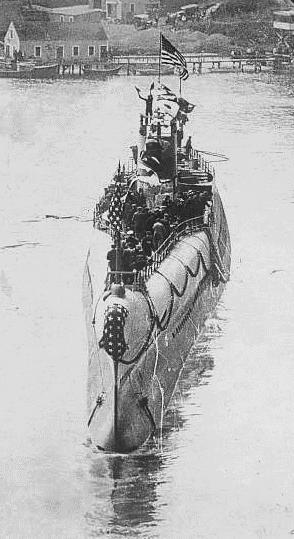
Photo in the private collection of Ric Hedman.

Photo courtesy of the Milne Special Collections, University of New Hampshire Library, Durham, N.H. Used with permission.
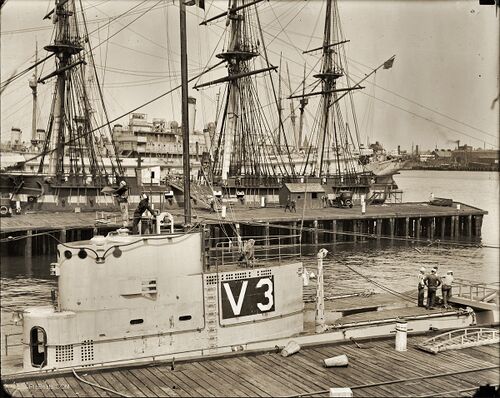
V-3's commanding officer at this time was LCDR Charles A. Lockwood, Jr., later to rise in rank to the rank of Vice Admiral with command of the Submarine Force, Pacific Fleet (COMSUBPAC). He was instrumental in developing the leadership and strategy in the highly successful submarine war against Japan.
Boston Public Library/National Archives Photo

There are good details of the 5"/51 caliber Mk 9 gun visible here and in the photo below. This was a large and heavy weapon that fired "semi-fixed" ammunition, meaning that the complete round (projectile + propellent charge) is stored connected together in the magazine, but the two can be easily separated for quicker handling. This would have been a necessity without a powered ammunition hoist.
Boston Public Library/National Archives Photo
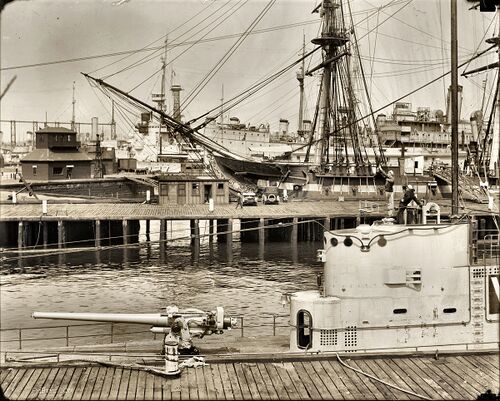
Boston Public Library/National Archives Photo

Directly behind the after deck of the submarine is the location where the North End of the Golden Gate Bridge will be constructed. This is known because of the presence of the Lime Point Light House seen at the right edge of the photo. The lighthouse is still there today although many of the buildings have been torn down around it.
The very small building seen set on the shore to the left of the light house is the approximate position of the northwest bridge pier footing.
Photo in the private collection of Ric Hedman.
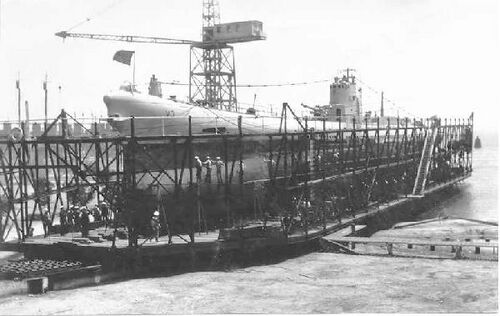
Photo in the private collection of Ric Hedman.
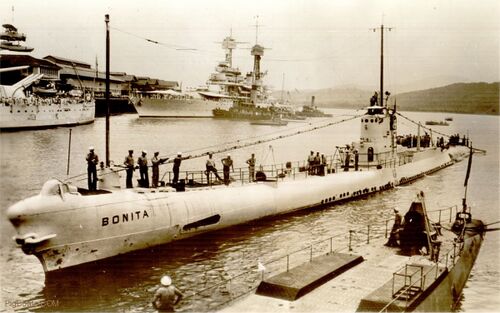
The vessels in Bonita's group heading to New York from the Pacific included Submarine Division 12 with the USS Bushnell (AS-2), a tender and the flagship of Rear Admiral John W. Greenslade, Commander Submarine Force, U.S. Pacific Fleet. USS Holland (AS-3), another tender, and the USS Ortolan (ASR-5), a rescue vessel, accompanied them along with the submarines Barracuda (SS-163), Bass (SS-164), Nautilus (SS-168), Dolphin (SS-169), and Narwhal (SS-167). The last being contingent on the completion of an overhaul at the Mare Island Navy Yard.
Various components of the combined fleet went their own ways for the various war game aspects of "Fleet Problem XV". The outcome of these war games is that for the first time, commanders were encouraged to "emphasize on decisive offensive action, reliance on individual initiative, and development of decentralized command and control".
Photo in the private collection of Ric Hedman.

Photo in the private collection of Ric Hedman.
Page created by:
Ric Hedman & David Johnston
1999 - 2023 - PigBoats.COM©
Mountlake Terrace, WA, Norfolk, VA
webmaster at pigboats dot com
